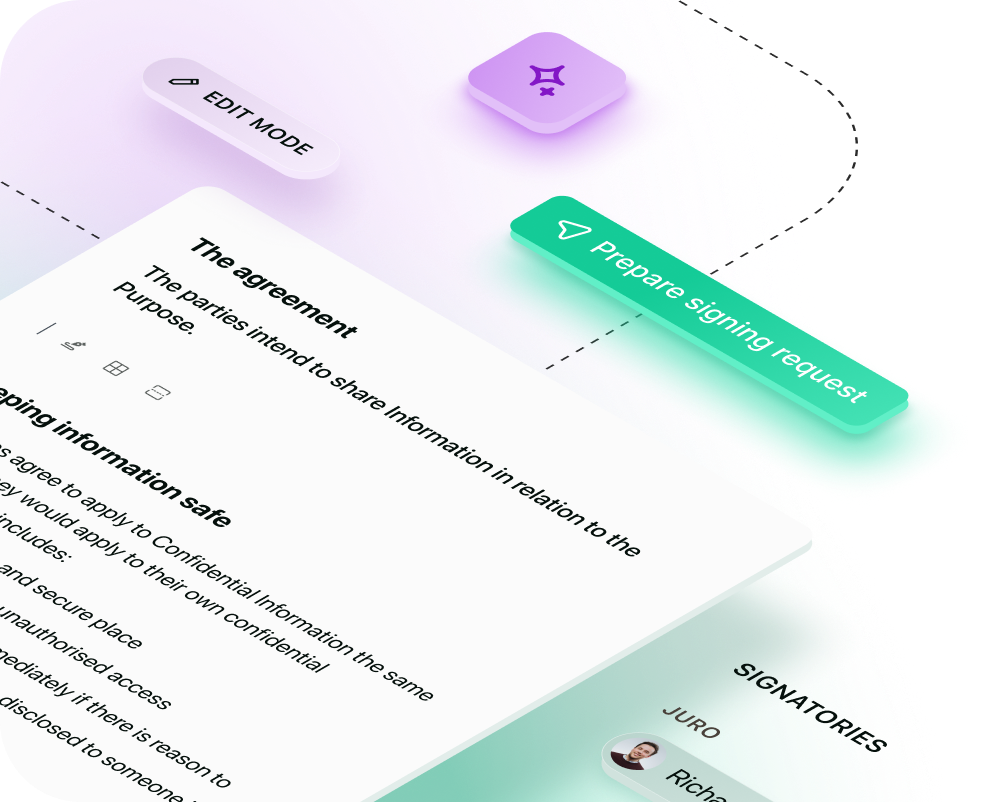Solutions
Customer Support
Resources
If your business manages a lot of personal information or proprietary data, you could benefit from this free data use agreement template.




Every day, businesses generate, access and share vast amounts of data.
There are countless instances when data is shared between two or more parties, be it personal information, proprietary data, or statistical information.
When this happens, it's important to have a clear understanding of how the data can be used and protected. This is where a Data Use Agreement (DUA) comes into play.
Data use agreements (DUAs) are legally binding documents that outline the terms and conditions of sharing data between two parties.
These agreements specify what data can be shared, how it can be used, the obligations of both parties, the security measures to be taken and what happens if the agreement is breached.
In essence, a DUA governs the transfer of non-public data, ensuring it is handled responsibly and ethically.
Ensuring responsible data handling has never been more important. The explosion of big data and the increased emphasis on data privacy laws like the GDPR and CCPA means companies have to be more vigilant than ever.
A DUA ensures that the party receiving the data can only use it for the purposes outlined in the agreement, providing the data owner with reassurances and protections.
So, a data use agreement is a necessary tool for managing and mitigating the risks associated with data sharing, including:
Without a DUA, your organization is more vulnerable to these risks.

Every DUA is unique, as they reflect the specific nature of the data sharing relationship. However, most data use agreement templates contain these key sections:
Both DUAs and data processing agreements (DPAs) are crucial for data governance but they serve different purposes.
A DUA primarily governs the exchange of data between two parties, focusing on the use of the data. Conversely, a DPA is a legally binding document between a data controller and a data processor, outlining how the processor should handle the controller's data to comply with privacy regulations.
Each are a vital component of a robust data management strategy, but they are used in different contexts and with different objectives in mind.
Data Use Agreements are typically created by the organization that owns or controls the data. This could be a business, a research institution, a government agency, or any other entity that collects and maintains data.
In many cases, the process of creating a DUA involves multiple parties within the organization. It might include:

After the DUA has been drafted, it needs to be reviewed and signed by both the data provider and the data recipient. The agreement should be shared in a secure manner that ensures the integrity and confidentiality of the document.
In the digital age, DUAs are often shared and signed electronically, using secure document sharing and eSignature platforms. This allows for secure, traceable delivery and receipt of the agreement, and the electronic signatures are legally recognized in many jurisdictions.
Remember that each party should retain a copy of the signed DUA for their records. This is important in case of any disputes or if there are any questions about the terms of the agreement in the future.
Managing agreements like Data Use Agreements can be a cumbersome and time-consuming task, especially when it's done manually. Juro offers a powerful AI-enabled solution to streamline the entire contract management process, making it easier, faster and more efficient.
Juro offers customizable templates that simplify the creation of DUAs. These templates cover all the key aspects of a standard DUA, which you can easily modify to suit your specific needs. Plus, the user-friendly interface means you don’t need to be a legal expert to create an effective agreement.
With Juro, you can collaborate in real-time with your team members, making it easier to draft and review your DUA. You can leave comments, suggest edits, and track changes, all in one place.
Juro allows you to securely share your DUA with the data recipient. Both parties can sign the agreement electronically, which not only speeds up the process but also provides a secure and legally binding signature.
Juro doesn’t just help with creating and signing DUAs, it also helps you manage them. You can store all your DUAs in one place, set reminders for review dates or termination clauses and quickly search through your contracts using intelligent search features.

By leveraging the power of Juro, you can simplify and streamline the entire process of managing your Data Use Agreements, leaving you more time to focus on your core business activities.
To find out more about Juro's flexible and collaborative contract management solution, hit the button below.
Juro is the #1-rated contract platform globally for speed of implementation.


Juro embeds contracting in the tools business teams use every day, so they can agree and manage contracts end-to-end - while legal stays in control.
Book your demo